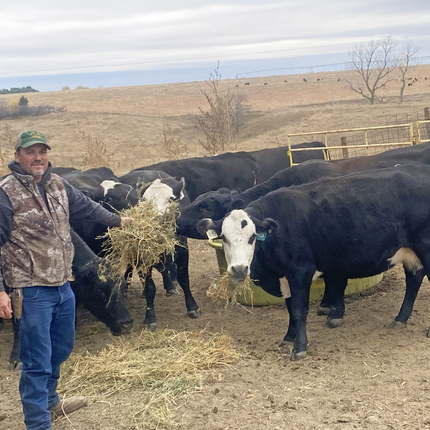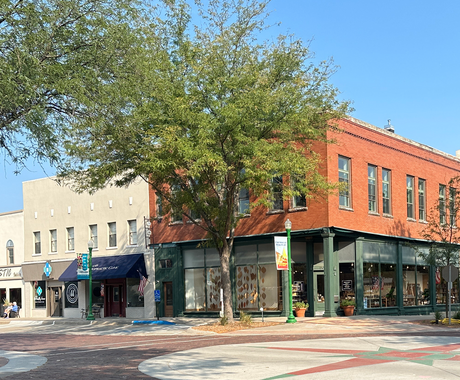Chris Trumler knows a thing or two about conservation. After majoring in Animal Science at the University of Nebraska–Lincoln, he returned home in 1994 to start farming on 640 acres. Since then, Chris has grown his diversified cattle, corn, and soybean operation near Rockville, Nebraska, to more than 1,300 acres, thinking about conservation every step of the way.
Chris’ passion for conservation started with his dad, who wanted a place to hunt with his kids and bought some pasture near their home in 1976 for that purpose. Since Chris took over the farm, he has always kept wildlife habitat a priority.
“Whatever is good for the herd is good for the birds, the deer, the jackrabbits,” said Chris. “It’s good for everything!”
In addition to creating habitat for local wildlife, Chris has observed the benefits of conservation practices across his entire operation, on both cropland and pasture. Early on, he noticed that his corn and bean fields lost a lot of moisture every time he worked the soil—he could see the impact on his crops throughout the summer months. As a result, he decided to adopt no-till across his farm.
“The moment I realized the benefits of no-till was when our dry land started producing crops on very dry years and producing yields similar to the irrigated acres on wet years,” said Chris.
That conservation decision has saved time and fuel, reduced soil compaction, increased yields, improved soil health, preserved soil moisture, and, most importantly, eliminated soil erosion. His pastures also benefit from the lack of silt deposits in the draws and bottomland, which improves water quality in his ponds and wetlands.
For Chris’ livestock, one of the changes with the biggest result was moving his calving season to June and July, rather than traditional winter calving.
“That has changed the way we rotationally graze,” he said. “We have tall grass and warm weather for the calves.”
He also uses a variety of grassland ecosystems for grazing, from cool season wet bottomlands to upland mixed warm season grasses, as well as corn stalks in the winter.
The Conservation Stewardship Program (CSP) administered by the U.S. Department of Agriculture’s Natural Resources Conservation Service has been an important tool for Chris in the adoption of practices. In addition to financial and technical support, the program has helped him think creatively about conservation on his operation.
For example, since his enrollment in the program, Chris has fenced off his stock ponds and installed solar wells to ensure his cattle are drinking clean water and that pond habitat remains intact for wildlife. He also installed wildlife friendly fences and escape routes for wildlife from stock tanks and completed a wetland restoration project to clear out brush and increase grazing capacity.
Additionally, Chris has used CSP to plant nearly 10,000 trees in shelterbelts and install drip irrigation systems to help get them established.
“CSP was great and the staff were super helpful,” said Chris.
Following in the footsteps of his father, farming to maximize wildlife habitat has created many opportunities for Chris to teach his own boys about hunting and caring for the land that sustains their family.
The Center for Rural Affairs is pleased to feature Chris as one of the dedicated producers across Nebraska who are willing to share their experiences via our Conservation Mentorship Network. The network provides opportunities for peer-to-peer learning, group discussions, and one-on-one guidance to enhance participants’ knowledge of conservation implementation.
To connect with Chris or learn more about the Conservation Mentorship Network, email [email protected] or call 402.590.7096.




